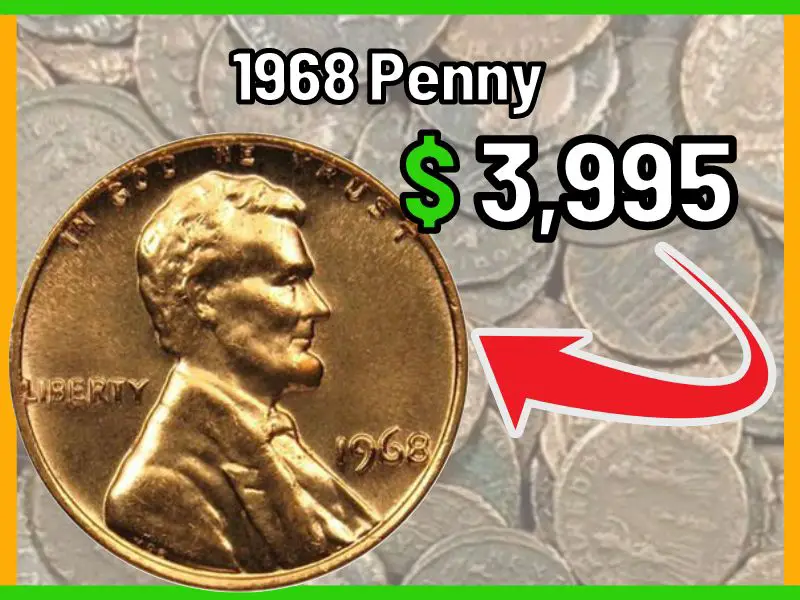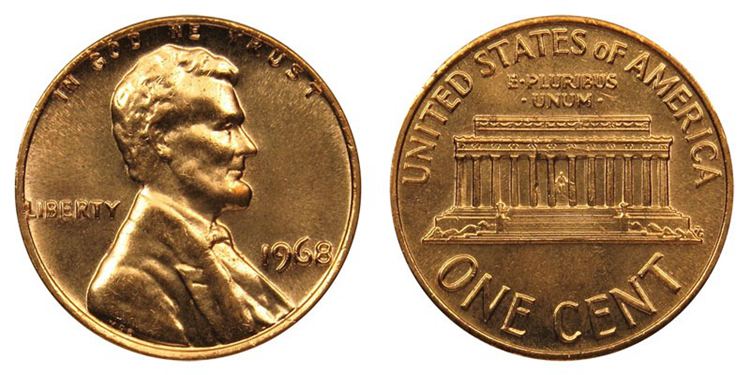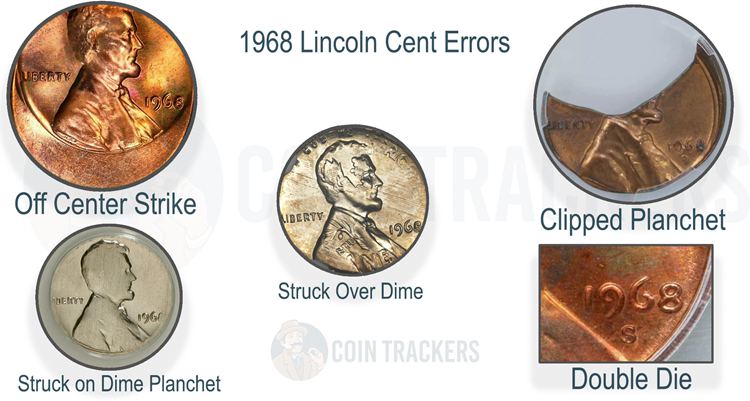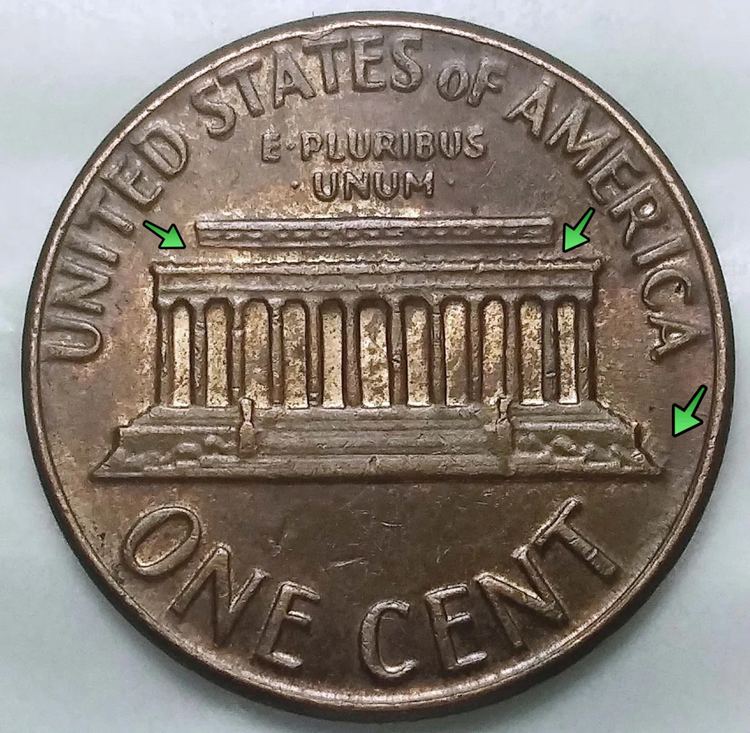
A 1968 penny is worth between $0.25 and $1, depending on the condition and mint mark. However, there are some rare errors and varieties that can be worth a few dollars or a few hundreds more, like doubled die pennies or off-center strike pennies.
One of the most popular hobbies among coin collectors is collecting pennies. While many people think of pennies as being worthless, there are actually a number of rare and valuable pennies that can be found in circulation. One of the most coveted pennies is the 1968 penny, struck during a time of transition for the United States Mint.
Looking to see how much your 1968 penny is worth? Well, you’ve come to the right place! In this blog post, we’ll take a look at the value of these coins and why they may be worth more than face value. So, if you’re curious about what your coin is worth, keep reading!
What Makes a 1968 Penny Worth Collecting?
A 1968 penny is worth collecting for a few reasons. For one, it was minted in a time of great change. The 1960s were a tumultuous decade, and the United States saw a lot of social and political upheaval. The 1968 penny captures this zeitgeist perfectly.
The humble Lincoln penny has been around for over a hundred years, and in that time it has become a fixture in American culture. From its humble beginnings as a copper coin to its current incarnation as a “steelie,” the Lincoln penny has undergone many changes. However, one thing that has remained constant is its popularity with collectors.
Lincoln pennies were first minted in 1909, and they were the first US coins to feature a president’s likeness. They were also the first US coins to be made of copper, which made them much more durable than earlier silver coins. Over the years, Lincoln pennies have undergone a number of changes, but they’ve always been popular with collectors. Today, they remain one of the most collected coins in the world.
So next time you find one in your change, take a closer look and appreciate its unique place in history.
What Does a 1968 Penny Look Like?

Photo: usacoinbook
A 1968 penny is a work of art in miniature. Composition-wise, it’s 95% copper and 5% zinc, giving it a slight gold color. It weighs in at a hefty 3.11 grams.
This penny is a reminder of our country’s past, and its importance in our present. When you look at a 1968 penny, you can’t help but be reminded of the legacy of Abraham Lincoln, and the impact that he had on our nation. Its obverse features the profile of Abraham Lincoln, with the words LIBERTY and IN GOD WE TRUST. The date is also inscribed on this side. The reverse of the coin features the Lincoln Memorial, with the words E PLURIBUS UNUM, UNITED STATES OF AMERICA, and the denomination.
Underneath the date, on the right side, there is a small letter. This letter is called a mint mark, and it indicates where the coin was struck. If there is no mint mark, then the coin was struck at the Philadelphia Mint. A coin with a “D” mint mark was struck at the Denver Mint, while a coin with an “S” mint mark was struck at the San Francisco Mint.
Are 1968 Pennies Rare?
In 1968, the United States Mint produced nearly three billion pennies. Most of these were struck at the Philadelphia and Denver mints, with a smaller number coming from the San Francisco mint. Although 1968 pennies are not rare in general, there are some scarce varieties that can be worth more to collectors.
A total of 1,707,880,970 Lincoln pennies were struck by Philadelphia, while Denver struck 2,886,269,600 coins. San Francisco also struck 258,270,001 coins.
Additionally, the US Mint also created 3,041,506 proof coins. Proof coins are a special type of coin that is minted for collectors. Unlike regular coins, which are struck using a die, proof coins are struck using a specially made die that has a higher level of detail. Proof coins are also usually made with a higher quality of metal than regular coins.
How Much is a 1968 Penny Worth?
Type |
Circulated |
Uncirculated MS 63 |
Uncirculated MS 65 |
1968 no mint mark penny |
$0,02 |
$0,25 |
$1 |
1968 D penny |
$0,02 |
$0,15 |
$1 |
1968 S penny |
$0,02 |
$0,15 |
$1 |
1968 penny price chart
The 1968 penny value depends on the condition of the penny and whether it is circulated or not. A circulated 1968 penny is only worth its weight in copper, currently about $0.02. An uncirculated coin can sell for more, depending on the condition and mint mark (or lack of it).
The 1968 penny with no mint mark is worth around $0.25 in uncirculated condition with MS 63 grade. However, in MS 65 grade, that same penny is worth $1. So, if you have a higher quality 1968 penny, it could be worth ten times it’s face value.
Similarly, the 1968 D penny and the 1968 S penny are each worth around $0.15 in uncirculated condition with an MS 63 grade. But, in MS 65 grade, those pennies are each also worth around $1. S-proof pennies, on the other hand, are worth at least $1. So, even though those pennies might not look like they’re worth much, they could actually be quite valuable.
Copper coins that have been professionally graded as RD (Red) can be worth quite a bit more, but there are a few things you should know about Red patinas before making a purchase. PCGS designates Red for copper coins that grade MS60 or better and show 95% or more of their original mint red color.
Grade |
Value |
MS 63 |
$7-$11 |
MS 65 |
$15-$25 |
MS 66 |
$38-$63 |
MS 67 |
$75-$125 |
What is the Most Expensive 1968 Lincoln Cent Ever Sold?
The most expensive 1968 Lincoln cent ever sold was graded MS 67+ by Professional Coin Grading Service (PCGS) and sold for $3,995 in 2015. While this may seem like a high price for a single penny, it is actually quite reasonable when compared to other rare coins.
A proof coin from the San Francisco Mint sold for a similar price. It was graded PR 69 by PCGS and sold for $3,795. The San Francisco proof penny is a very rare coin and is highly sought after by collectors. Proof coins are struck using a special process that results in a higher quality coin.
How to Find the 1968 Penny Value
Coin collecting is an increasingly popular hobby, and many people are interested in finding valuable coins. In order to determine the value of a 1968 penny, it is important to compare it to similar coins that have recently been sold. For example:
- A 1968 proof Lincoln penny graded PR 68 by PCGS sold for $10.51.
- Another proof penny in slightly worse condition sold for $2.50.
- A circulated 1968 D penny sold for $0.02.
- On the other hand, a circulated 1968 no mint mark penny sold for around $1.
- A roll of uncirculated 1968 S cents sold for $12.99.
With a little research, you should be able to get a good sense of your 1968 penny value.
1968 Lincoln Penny Rare Varieties

Photo: cointrackers
While most coins minted by the government are meant to be identical, there are always a few that slip through the cracks. These coins, known as error coins, can be incredibly valuable to collectors. In some cases, an error coin can be worth hundreds or even thousands of dollars. The value of an error coin depends on a variety of factors, including how rare the error is and what kind of error it is.
1968 Doubled Die Pennies
Any experienced coin collector knows that a 1968 doubled die penny is a highly valuable coin. But how does a double die error occur? Essentially, it happens when the die that is used to strike the coins is damaged in some way. This can happen if the die is dropped or if it is struck by another die. As a result, the image on the die is doubled, and this doubling is transferred to the coins that are struck by the die.
For collectors, these coins are highly prized because they are so rare. In fact, a single 1968 doubled die penny can be worth anywhere from $25 to $100. So, if you come across one of these coins, be sure to pay close attention to the lettering as well as in details such as Lincoln’s eye, beard, and ear, and bowtie. It could be worth a small fortune!
1968 Off-Center Strike Pennies
In 1968, the U.S. Mint produced a small number of pennies with an off-center strike error. These coins are highly prized by collectors due to their rarity and unique error. Off-center strike errors occur when the blank coin is not properly centered in the striking chamber before it is struck by the dies. As a result, the image on the coin is not struck in the center of the blank.
The value of an off-center strike penny depends on the magnitude of the error. Coins with a small off-center strike may only be worth a few dollars, while those with a more significant error can be worth hundreds or even thousands of dollars.
1968 Struck on a Wrong Planchet Penny
One type of error is known as a “struck on a wrong planchet” error, and it occurs when a blank coin is accidentally struck by a die intended for another denomination. In 1968, this type of error occurred when a blank penny was struck by a die meant for a dime. As a result, the resulting coin has the same diameter as a dime but the thickness of a penny. While this type of error is relatively rare, it can be quite valuable to collectors.
1968 Clipped Planchet Error
Coins are produced in a very precise process that involves multiple steps and strict quality control measures. However, even with these measures in place, errors can still occur. One type of error is known as a clipped planchet error, which occurs when a piece of metal is cut too close to the edge of the coin during the striking process. As a result, the coin ends up with an uneven or missing rim.
1968 Repunched Mintmark Pennies
The repunched mintmark occurs when the die that stamps the coin is struck more than once, resulting in an offset or doubled mintmark. This type of error is relatively common, but the 1968 Repunched Mintmark Penny is considered to be one of the more collectible varieties. 1968 Repunched Mintmark Pennies are an error coin that typically sell for between $5 and $15.
1968 “Floating Roof” Pennies

Photo: i0.wp
The 1968 “Floating Roof” penny is a rare variety of the Lincoln Memorial penny that appears to show the roof of the Lincoln Memorial on the back of the coin hovering above the rest of the design. The coin was minted in error, and it’s unknown how many have been made. Today, these coins are highly sought after by collectors and can trade for $1 to $5 each. Despite their relatively low value, the “Floating Roof” pennies are an interesting example of a minting error that has led to a collectible coin.
Factors That Influence the 1968 Penny Value
The value of a 1968 penny depends on several factors, including the condition of the coin and whether it was minted in Philadelphia (no mintmark), Denver (D), or San Francisco (S).
Condition
Whether you’re a first-time coin collector or a seasoned numismatist, one of the first things you need to understand is the importance of condition. Simply put, the condition of a coin refers to its state of preservation. Uncirculated coins are those that have never been circulated and therefore show no signs of wear, while circulated coins will show some degree of wear from being handled and traded.
The Sheldon Grading Scale is the most commonly used method for assessing a coin’s condition, and it goes from Poor (P-1) to Mint State (MS-70). A coin’s condition can have a significant impact on its value, so it’s important to be familiar with this scale if you’re looking to buy or sell 1968 pennies.
Mint Mark
Mint marks are small letters or symbols that indicate where a coin was minted. For example, Pennies with an S mint mark were minted in San Francisco, while those with a D were minted in Denver. Collectors often place a premium on coins from specific mints, which can impact the value of a coin.
For example, Pennies with an S mint mark are usually more valuable than pennies with no mint mark, since they are more rare. As a result, mint marks can be an important factor to consider when determining the value of a coin.
Type of Strike
The 1968 penny is worth more if it was struck as a business strike rather than a proof. A business strike coin is one that is made for general circulation and intended to be used as currency. A proof coin, on the other hand, is a specially made coin that is not intended for circulation. Proof coins are usually made with a higher quality of craftsmanship, and they often have a different appearance from business strike coins.
For example, proof coins may have a glossy finish, while business strike coins have a matte finish. Business strike coins are usually less valuable than proof coins, but there are some exceptions. For instance, certain rare business strike coins may be more valuable than proofs of the same type. In general, however, proofs are considered to be more valuable than business strikes.
Errors
Coins are supposed to be perfect circles, with two faces that are exactly the same. But sometimes, the mint makes a mistake. Coins with errors are usually more valuable than regular coins because they are so rare.
Errors that occur after a coin has been circulated are less valuable because there are more of them. However, even a small error can make a coin worth more than its face value. So, if you ever come across a coin that doesn’t look quite right, it could be worth more than you think!
Final Thoughts
Many people have a few old coins lying around that they inherited from their grandparents or found while cleaning out the attic. While most of these coins are not worth much more than their face value, there are a few rare exceptions that can be worth a bit more. One such example is the 1968 penny.
So, how much is a 1968 penny worth? Most 1968 pennies are worth between $0.25 and $1, depending on the condition and mint mark. However, there are some rare errors and varieties that can be worth a few dollars more. So, if you have a 1968 penny, it’s worth taking a closer look to see if you have one of these rare errors or varieties. Thanks for reading!
